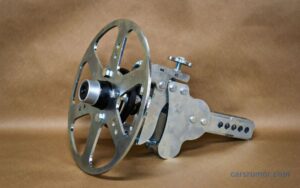Cautionary Note: The forthcoming narrative will provide a somewhat biased coverage of five luxury sedans, characterized by sleek aesthetics, opulent interiors, and price tags ranging from $50,000 to $57,000. All are propelled by sophisticated V-8 engines mated to advanced four- or five-speed automatic transmissions. With the exception of the front-wheel-drive Cadillac STS, they all feature rear-wheel drive and are laden with what the industry terms as “content,” encompassing amenities rarely seen in other brands. Despite being marketed as five-passenger sedans, practicality dictates that they comfortably transport only four adults over moderate distances.
Our editorial team deviates from the conventional focus on comfort, silence, and a plush ride. Instead, our evaluations lean towards agility, roadworthiness, and a certain hedonistic quality we believe should be inherent in any automobile, regardless of its purpose or price. This approach sets us apart from other reviewers who may prioritize seating softness, sound system quality, and transmission smoothness. For those seeking such assessments, we recommend consulting Consumer Reports. However, if your interest lies in luxury sedans offering both long-distance, high-speed travel and a blend of comfort and driving pleasure, read on.

To begin, none of the five vehicles under scrutiny can be faulted in terms of quality or overall appeal. However, as our evaluations progressed through two days of rigorous driving in upstate New York, it became evident that we were not dealing with five similar machines but rather two subtly distinct categories – three high-performance European models and two milder, gentler variations on the American theme that failed to ignite our youthful enthusiasm.
5th Place: Infiniti Q45t The Infiniti Q45
introduced in late 1989, has struggled to gain traction in the luxury car market despite its celebrated quality. Its inclusion in this evaluation is based on enhancements to its touring suspension, incorporating adjustable shock absorbers. All Q45s benefit from a mild restyling of the interior and exterior, including a new grille, gas-discharge headlights, and an updated dashboard.
Positives:
- Elegant interior design.
- Potent Northstar V-8 engine provides robust American-style power.
Negatives:
- Excessive size and bulk.
- Incremental styling changes.
- Susceptible to lurking understeer.
Conclusion: Undoubtedly the finest among Cadillacs, yet falls short of class-leading status.

Specifications:
Verdict: A capable luxury car in search of a distinctive identity.
Weighing in at 4047 pounds, the Q45t is the heaviest among the group. Its 0-to-60 time of 8.4 seconds places it as the slowest, and its DOHC 32-valve V-8, reduced to 4.1 liters and 266 horsepower, contributes to its modest performance. Despite an adjustable suspension, the Q45t’s handling lacks the dynamism of its competitors. Its strength lies in a spacious interior adorned with luxurious materials, but its performance on fast bends and hard cornering falls short compared to the top contenders.
While the Q45t may not excel as a high-performance sedan, it also lacks the visual impact to compete with the likes of the BMW 7-series and the new S-class Mercedes-Benz. It hovers between categories, suggesting that a transformation into an unabashed full-size luxury sedan might be a strategic move to capitalize on its inherent excellence.
- 1998 Infiniti Q45t
- 266-hp V-8, 4-speed automatic, 4047 lb
- Base/as-tested price: $51,500/$52,600 (est.)
- C/D Test Results:
- 60 mph: 8.4 sec
- 1/4 mile: 16.5 sec @ 87 mph
- 100 mph: 22.0 sec
- 130 mph: 36.0 sec
- Braking, 70–0 mph: 195 ft
- Roadholding, 300-ft-dia skidpad: 0.73 g
- C/D observed fuel economy: 20 mpg









